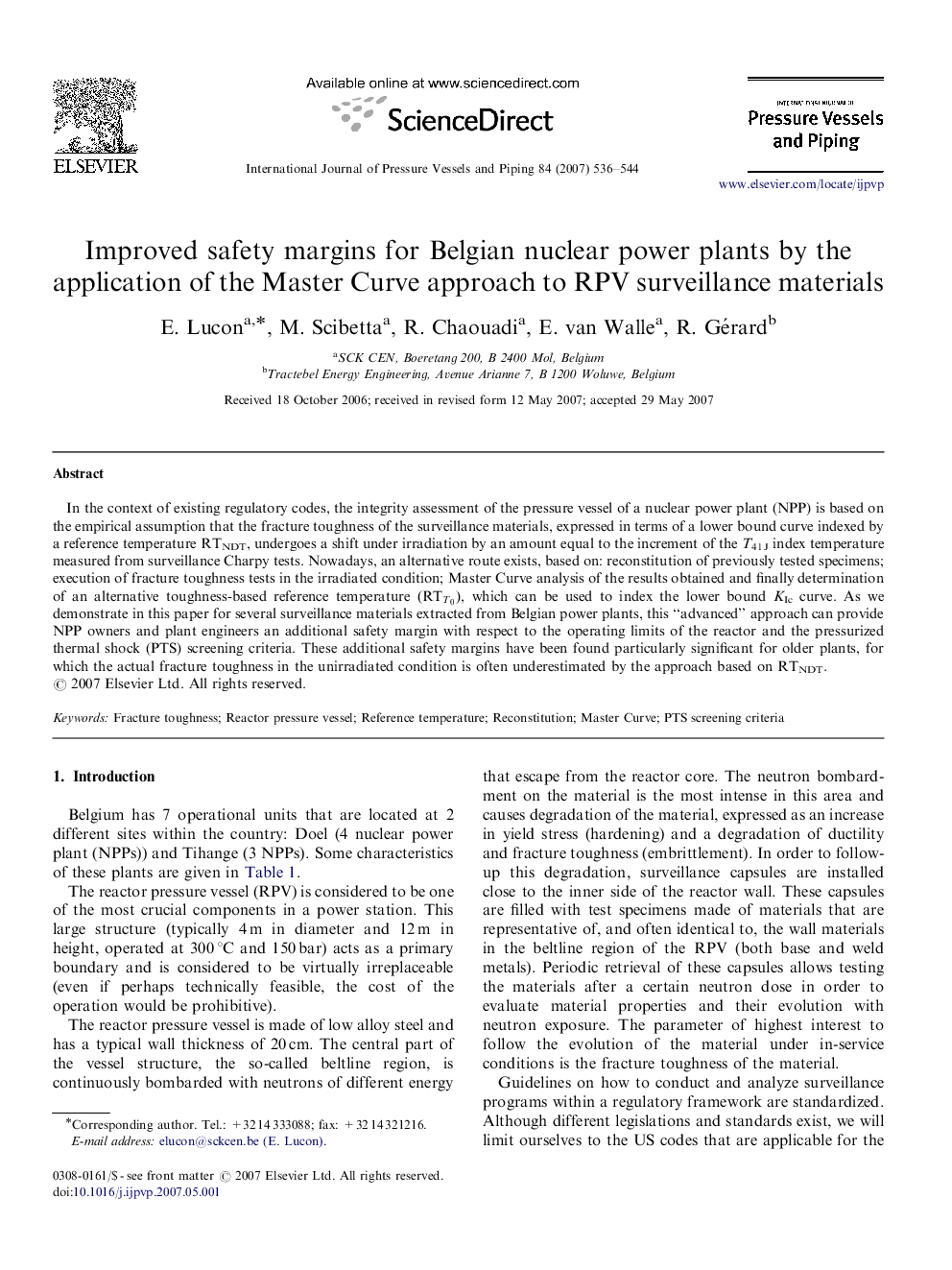| Article ID | Journal | Published Year | Pages | File Type |
|---|---|---|---|---|
| 787963 | International Journal of Pressure Vessels and Piping | 2007 | 9 Pages |
In the context of existing regulatory codes, the integrity assessment of the pressure vessel of a nuclear power plant (NPP) is based on the empirical assumption that the fracture toughness of the surveillance materials, expressed in terms of a lower bound curve indexed by a reference temperature RTNDT, undergoes a shift under irradiation by an amount equal to the increment of the T41 J index temperature measured from surveillance Charpy tests. Nowadays, an alternative route exists, based on: reconstitution of previously tested specimens; execution of fracture toughness tests in the irradiated condition; Master Curve analysis of the results obtained and finally determination of an alternative toughness-based reference temperature (RTT0)(RTT0), which can be used to index the lower bound KIc curve. As we demonstrate in this paper for several surveillance materials extracted from Belgian power plants, this “advanced” approach can provide NPP owners and plant engineers an additional safety margin with respect to the operating limits of the reactor and the pressurized thermal shock (PTS) screening criteria. These additional safety margins have been found particularly significant for older plants, for which the actual fracture toughness in the unirradiated condition is often underestimated by the approach based on RTNDT.
